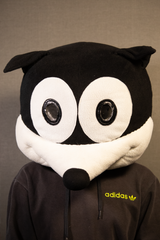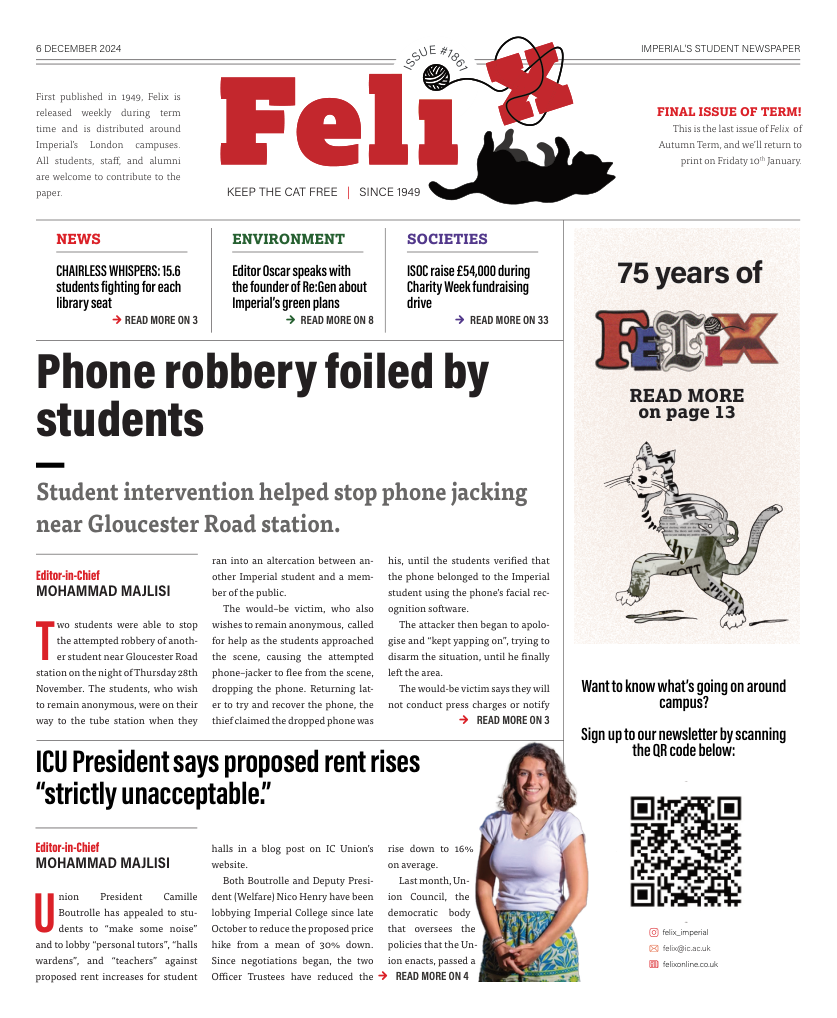How is Felix printed?
One of the questions I am asked quite regularly as Editor is "How is Felix printed?" Most people have the misconception that we still do everything in our office, from writing, to copyediting, to laying out, to printing, and distribution. We don't. We have an external printer in Cambridgeshire; you can see the exact name and address if you like on page two of every Felix printed since the redesign (and probably before then too!), but we do everything digitally. Gone are the days of the lithograph and two part-time Union employees to help us. Instead, Felix runs on a weekly schedule, with tight page-counts and chasing up of busy editors who may have forgotten to update me on the pagination. Often, I am seen in the office, anxiously waiting for a WhatsApp notification on a Monday or Tuesday, ready to finalise everything so that editors don't accidentally make a mistake with how many pages they are allotted. By Tuesday. Every section apart from News is usually laid out, and my army of copyeditors come in to pick apart every little bit of the article one by one to ensure there aren't any spelling, punctuation, or layout mistakes. Articles are then sent to print on Thursday's. We're usually in the office until five in the afternoon, rushing to complete every little task there is. My body has now gotten used to the stress. But Felix has only been digital for a little while (relative to its age): approximately 30 years or so. Before, the newspaper would be laid out by hand. The earliest example I can find of how Felix was printed is from #154. Until at least 1960, Felix was printed off campus, with students laying out articles on pasteboards. Everything would be manually typed, taking the team “seven or eight hours”, pasted on boards. The printers would often have to fix issues or mistakes on these boards. This wasn't just a simple backspace either: a new line would have to be typed out, cut out carefully and pasted on top of the error. At the printers, photos would be taken of the boards, and the negatives would be developed on plates which the printers could use as screens. These would then be printed, with the then eight-page count printed as two pieces and bound.
By the 1970s, the Union had bought an offset-litho printer and a Varitype typesetter as well as hiring a part-time printer to help students produce Felix. The quality dramatically increased, although mistakes still made their way through. Felices of this era tend to have wonky lines, and inconsistent printing due to issues with the ink. By now Felix was printed on campus, and the team would spend hours getting editions ready for Fridays: issues had become much more regular due to the introduction of the sabbatical Editor role, and an in-house printing press. Issues remained however, as the press was very unreliable, breaking down regularly. I spoke with a former editor whose tenure was in the 70s and he told me that printing almost "drove him to breaking point on a regular basis". On one occasion, the production team finished printing at 7.20 am on Friday morning, leading to many editors skipping their lectures.
By 1979, the old mechanical varityper had been replaced by a phototypesetter, costing the Union £8000 in process (around £38,500 when adjusted for inflation). Paid partly by the College and Union, the typesetter machine was on the front cover of Felix #504, no doubt a relief to the frustrated editors at the time. A feature in 1989 shows how Felix was still produced in house: it's still quite similar to the 1960 process, albeit done in house but with the phototypesetter still in use.
Around this time, Felix became digital, and we cycle back to bad design choices caused by 2000s brain, and wrestling with the delicate beast that is the Adobe Suite. However, we can get really straight lines now so that's a plus.









